#Polycladida
Explore tagged Tumblr posts
Text
Taxonomy Tournament: Spiralia
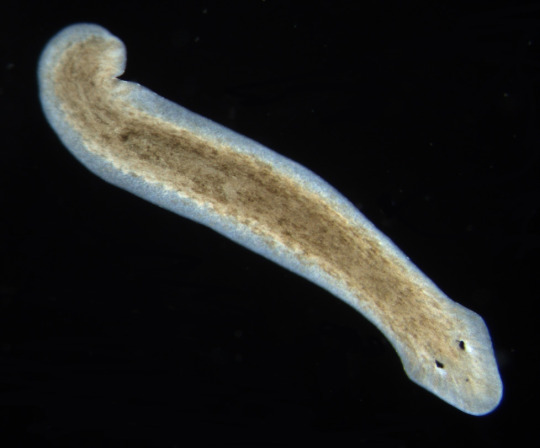
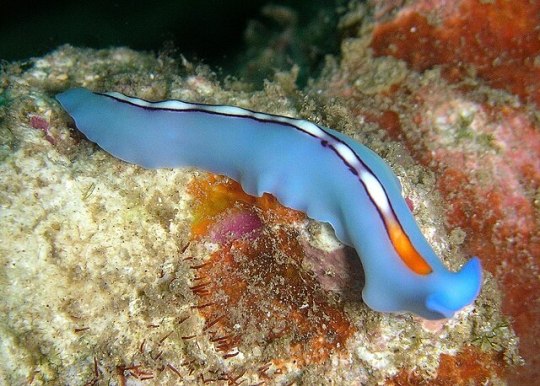
Tricladida. This order of flatworms is made up of planarians, which are often used as a model organism
Polycladida. This order is made up of free-living marine flatworms, including the pseudoceros
#animals#biology#polls#poll tournament#zoology#flatworms#planarians#worms#spiralia#Tricladida#Polycladida#0xev0xf1#Animal Tournament#Animal Tournament Round 1
105 notes
·
View notes
Text
Flatworm mimicry
Fun fact! Did you know that certain flatworms are mimicked by certain types of fish?
youtube
This is speculated to be from the flatworms TTX (Tetrodotoxin) content. More research is being conducted on the topic, but mimicry like this can be used to infer that the TTX content in flatworms is a defense mechanism. (Although, some studies show that there are high concentrations of TTX in the pharynx, or feeding organ, which has had scientists hypothesize wether or not TTX is used in prey capture.)
Very cool!!
4 notes
·
View notes
Note
Bea: Platyhelminthe (Polycladida (cute ribbon worm))
Bill: Platyhelminthe (Cestodes (tapeworm))
This is exactly how Ford has them both sorted in his brain, actually.
5 notes
·
View notes
Note
for that ask game: your opinion on worms? any kind is fine
OH MAN. worms are one of my special interests (hence the worm themed usernames on my blogs lol) and i have A Lot to say. worm rambling below the cut. ive included some images, so if anyone here is grossed out by worms i would recommend not clicking the keep reading button
OK SO. i love all worms but my specific interest is in flatworms (platyhelminthes) so im going to talk abt them here! im especially into terrestrial flatworms (geoplanidae) but marine flatworms and smaller planarians are also very cool!
one of my favourite things abt flatworms is the variation among them. obv there's a lot of difference at higher taxonomic levels, for example you get
polycladida, the numerous and varied marine flatworms that are free swimming and often have two short tentacles on their heads, and many small ocelli! they are quite large compared to other flatworms in general too!
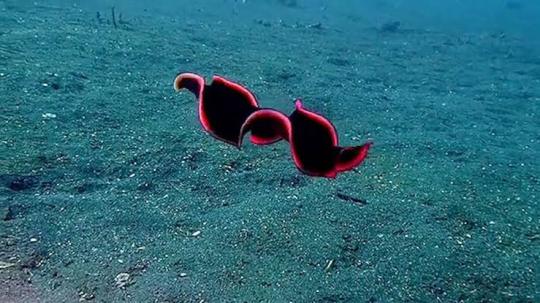
freshwater triclads, which are small and brown and live in freshwater, and usually (although not always) have two eyes!

and geoplanidae, the terrestrial flatworms, who inhabit gardens everywhere and usually (although, once again, not always) have many small ocelli!

there are more taxonomic classifications, and this isn't rlly a particularly scientific or accurate way to define them, but it's how i tend to split them up in my head lol.
geoplanidae are my favourites bc they're very easy to find where i live, and they're very beautiful and there's so much variation within the family. all of them are carnivorous, and although they will scavenge, they're often active predators and hunt other worms and also gastropods. their many ocelli (eyes) are usually pretty small and they can't see much at all, with the exception of species like the new guinea flatworm (platydemus manokwari), which is invasive in the US and has two large-ish prominent eyes on either side of its snout, and has better visual acuity than most flatworms iirc.

(see its beady wee eyes!!)
the majority of geoplanidae use chemical senses to track down their prey! because snails/slugs and other worms leave trails of slime, which are often imbued with pheromones to attract mates etc, predatory flatworms can track down their prey by following the chemicals in these trails.
once they've found their prey, they will wrap themselves around it and excrete a mucus which they use to slow down their prey. they're very strong as well so will often overpower prey using physical force! after this, they use their eversible pharynx (a kind of muscular tube) to penetrate or grasp their prey. the pharynx produces digestive chemicals through special glands. the prey is effectively digested externally, after which the flatworm will eat it.
it's a little bit horrific, but also very cool imo. flatworms can have mixed impacts on their environments, in native areas they can help control pests and keep the soil healthy, but if they become invasive they can decimate native worms and snails/slugs, which can decrease soil health. it really depends on if they're native or not.
terrestrial flatworms come in a wide variety of shapes and sizes! many of them are pretty small and long with some kind of a stripe going down the middle, as you can see in this personal photo of mine of a newzealandia graffi flatworm:
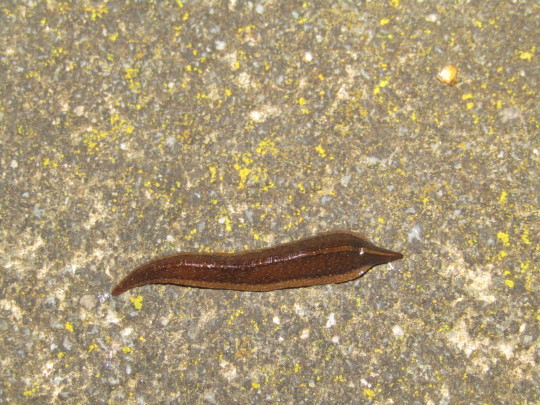
although there are many brownish flatworms, there are many others that come in lots of different colours, like this creamy-orangey one in another photo of mine (australoplana sp.):

or the blue garden flatworm (not my photo, caenoplana coerulea):

or even beautifully patterned ones like this unidentified flatworm!
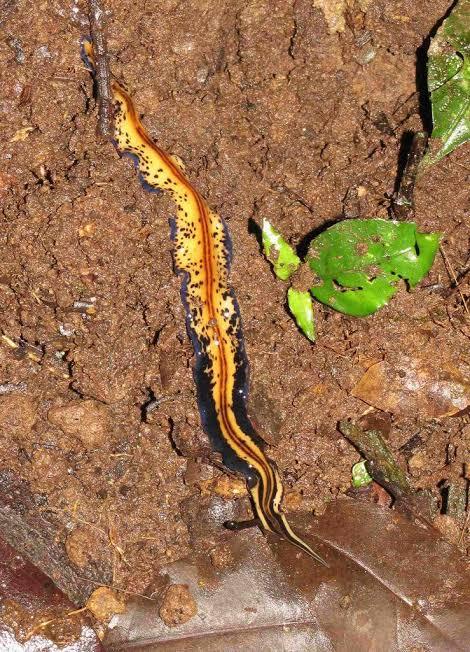
within geoplanidae, there are also hammerhead flatworms (subfamily bipaliinae), named so because of their hammer-shaped head, usually lined with ocelli around the edges:

this species is bipalium choristosperma, and is native to borneo iirc! some other species of hammerhead flatworm, i.e. the brownish bipalium kewense (im running out of pics for this post rip so no image for this one but you can google it if you're curious!) are invasive in certain areas of the united states.
other geoplanarians are invasive in some areas, like the aforementioned platydemus manokwari which is also invasive in the US, or the new zealand flatworm (arthurdendyus triangulatus), which is invasive in the UK (despite it being called the new zealand flatworm, i have yet to actually see one irl and i live in its native, non-invasive range lmao 🤷♂️). like many other invasive animals, they're very good at getting into places undetected (esp plants/soil being transported, which is how they usually make it into new countries), and are just very efficient little predators. which is unfortunately bad news for gastropods and other worms lol
geoplanarians can also get quite large! check out this Obama eudoximariae specimen (not named after the president lol)
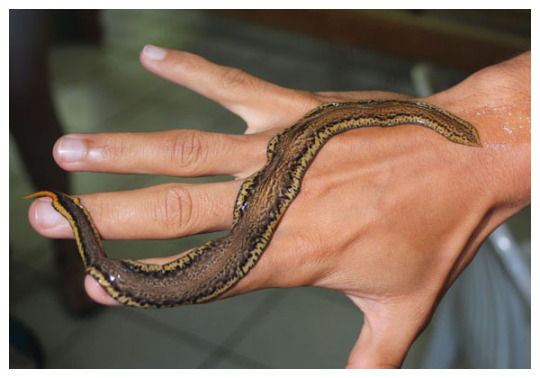
however most are usually a lot smaller than this. the flatworms where i live are usually no longer or wider than my pinky finger.
another cool fact abt flatworms is that many species can survive being cut in half, in fact each half will go on to form a new flatworm! some species will intentionally split themselves in half, or reproduce through "budding" where another flatworm just starts growing on them and eventually splits off. this is all asexual reproduction, but as well as asexual reproduction many species also reproduce sexually and lay eggs. they're such cool little beasts and have so many tricks up their nonexistent sleeves!
many species also glow in the dark under uv light. ive run out of images to add but it's cool as hell, my profile pic on my creature side blog is a photo i took of one of a newzealandia graffi worm glowing under uv light/blacklight. very cool of them to do that
ANYWAYS this post is getting long as hell and i have other stuff to do today so im gonna cut it short here. i hope you enjoyed my worm ramble :-) for anyone who is curious, i post more abt flatworms and other animals i like on my side blog @geoplanidae :-) <3 🪱
9 notes
·
View notes
Photo
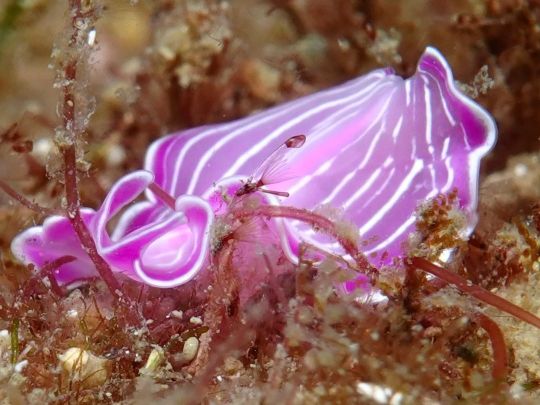
Prostheceraeus roseus
#Prostheceraeus roseus#flatworm#upl#Platyhelminthes#Rhabditophora#Polycladida#Cotylea#Euryleptidae#Prostheceraeus
150 notes
·
View notes
Text

Yep, I went to my favorite tidepool again this afternoon. ♬
Actually it wasn't my original plan. Right before lunch time, I was enjoying this special shaved ice...



... and I didn't think I had time for tidepooling. But when I came home and checked on the tidepool just in case, the tide looked low enough. So I went for it.



This red polycladida was new to me. At first I thought it was a tiny piece of red algae. But looked like it slightly moved! Then it started moving like this and I kept shooting. Its color was much brighter red but this was the best my camera could do. I was really tired when I got home, but I was truly happy, as always, that I went to the tidepool. .
9 notes
·
View notes
Photo
Fun fact: Marine flatworms don’t have brains! Instead they have a very basic nervous system made of two collections of cells called ganglia; they are arranged in chords running down either side of the body. These cells are responsible for all sensory input, movement, and body functions.

Photo by Yury Ivanov | Info | Info
An image of Pseudobiceros fulgor taken in Bali, Indonesia. Pseudobiceros is a genus of flatworms. Like all flatworms, Pseudobiceros are hermaphrodites. This particular genus engages in penis fencing. When the “winner” touches its penis to the “skin” of the other, insemination occurs, and the “loser” has to bear the burden of motherhood.
Flatworms (Platyhelminthes, or platyhelminths) are a phylum of relatively simple bilaterian, unsegmented, soft-bodied invertebrates. Unlike other bilaterians, they are acoelomates (having no body cavity), and have no specialized circulatory and respiratory organs, which restricts them to having flattened shapes that allow oxygen and nutrients to pass through their bodies by diffusion.
#lightning flatworm#Polycladida#Pseudocerotidae#flatworms#marine flatworms#invertebrates#marine invertebrates#coral reefs#coral reef invertebrates#tropical invertebrates#tropical fauna
363 notes
·
View notes
Text

Phyllidia polkadotsa is a wonderfully named dorid nudibranch species found around Hawaii. It grows around 2.5cm long, and feeds on sponges.
Closely resembling Phyllidia polkadotsa is a species of flatworm in the Eurylepta genus. Mimicking nudibranchs is common in flatworms of the taxonomic order Polycladida, as nudibranchs are often toxic, so predators of the similarly coloured flatworm will stay away. Happy Flatworm Friday everyone!

Nudibranch photo source
Flatworm photo source
#phyllidia polkadotsa#eurylepta#nudibranch#flatworm#sea slug#flatworm friday#marine biology#ocean#science
144 notes
·
View notes
Text
Taxonomy Tournament: Spiralia


Polycladida. This order is made up of free-living marine flatworms, including the pseudoceros
Lingulida. Brachiopods of this order have a long shell and a fleshy stalk with which it burrows into sand/mud. Includes Lingula, the oldest animal genus with species still alive today
#animals#biology#polls#poll tournament#zoology#Animal Tournament Round 4#flatworms#worms#spiralia#brachiopods#Polycladida#Lingulida#0x1av0x1b
43 notes
·
View notes
Note
Favourite worm species?
i dont have any specific species in mind per se but im a fan of anything coming from orders tricladida (flatworms), polycladida (marine flatworms) and haplotaxida (earth worms, generally). - mod wiggles
9 notes
·
View notes
Text
i think that flatworms of the order Polycladida would be good friends with nudibranchs :)
23 notes
·
View notes
Text
Animal Crossing Fish - Explained #93
Brought to you by a marine biologist who hopes this doesn’t fall flat...
CLICK HERE FOR THE AC FISH EXPLAINED MASTERPOST!
I’m gonna be real. I had to do some serious research about flatworms to do this entry and I’m so glad I did. They are seriously really cool, and there’s just nothing like them in the game. They are truly unique and their biology is quite fascinating.

Another one you should step to it on catching before it’s gone by the end of the month. I found these to be a bit hard to find at first, but once I did, suddenly they were everywhere. Odd how that happens.
Lots of animals are called worms; the name encompasses many kinds of elongated animals that don’t really fall into the more popular categories we recognize, like mollusks, arthropods, or chordates. Even some insect larvae, like silkworms, are called worms, but of course, aren’t really. When you think of worms, you probably first think of an Earthworm, a member of Phylum Annelida, the segmented worms, which are “closely” (and I use that very loosely) related to the Mollusks under the Superphylum Lophotrochazoa. Flatworms, Phylum: Platyhelminthes, parted ways evolutionarily from the Loph.s some 580 million years ago. They are unique in the AC games, as far as the AC suite of animals goes.
Flatworms are truly flat. Unlike most animals you know about, flatworms do not have a body cavity - they do not have a circulatory or respiratory system or the associated organs, and so they are flat to allow oxygen and nutrients to reach their cells via diffusion. They do have a digestive system, but it’s very simple, and in most species, the mouth remains the only opening in or out of the system, so many regurgitate particles that aren’t digestible. Because of these limiting factors, most flatworms do not get very big (some are microscopic) and a great many are parasites. Some of the more common flatworms you may have heard of are the parasites known as flukes and tapeworms. However, of course, there are also many free-living species, like today’s flatworm, Pseudoceros bimarginatus :

It doesn’t have a common name from what I can tell. It’s a native to coral reefs in the South Pacific, so explains why it is put in the coral reef tank in the museum. Although there are thousands of flatworm species, this one is part of the Order Polycladida, the group which comprises the free-living (non-parasitic) marine flatworms. Their defining features are the two tentacles that appear to be folds of the flattened body at the “head end” (these are the adorable bunny-ear-looking folds to the left in the picture). They also have a developed pharynx, a more complicated digestive system than other flatworms, and even have multiple ocelli, or simple eyes!
And there you have it! Fascinating stuff, no?
#flatworm#acnh#marine biology#animal crossing#animal crossing new horizons#science in video games#animal crossing fish explained
11 notes
·
View notes
Text
Phylogenomics suggests that larvae are ancestral in polyclads, but not homologous to the trochophore
Platyhelminthes (flatworms) are a diverse invertebrate phylum that are useful for exploring life history evolution. Within Platyhelminthes, only two clades develop through a larval stage: free-living polyclads and parasitic neodermatans. Neodermatan larvae are considered evolutionarily derived, whereas polyclad larvae are hypothesized to be retained from the last common ancestor of Platyhelminthes - and Spiralia - due to ciliary band similarities among polyclad and other spiralian larvae. However, larval evolution has been challenging to investigate within polyclads due to low support for deeper phylogenetic relationships. To investigate polyclad life history evolution, we generated transcriptomic data for 21 species of polyclads to build a well-supported phylogeny for the group. We then used ancestral state reconstruction to investigate ancestral modes of development (direct vs indirect) within Polycladida, and flatworms in general. The resulting tree provides strong support for deeper nodes and we recover a new monophyletic clade of early branching cotyleans. Early branching clades of acotyleans and cotyleans possess diverse modes of development, suggesting a complex history of larval evolution in polyclads that likely includes multiple losses and/or multiple gains. Our ancestral state reconstructions in previous platyhelminth phylogenies also suggest that larval similarities between flatworms and other phyla are most likely convergently evolved http://dlvr.it/STwnRs
0 notes
Photo

Taken 2022 22nd January, these are 'Cryptocelides loveni' @evolutionsmuseet being displayed. In Sweden, they occur on the west coast on rocky shores, especially in upper and lower tide pools. #animal #animals #djur #wildlife #naturliv #nature #preservedspecimen #flatworm #flatworms #invertebrate #invertebrates #naturhistoriska #naturalhistory #virvelmask #plattmask #marineflatworm #marineflatworms #animalia #platyhelminthes #cotylea #rhabditophora #polycladida #Polyposthiidae #notoplanas #notoplanaacticola (at Evolutionsmuseet) https://www.instagram.com/p/CZ2tALRqkxk/?utm_medium=tumblr
#animal#animals#djur#wildlife#naturliv#nature#preservedspecimen#flatworm#flatworms#invertebrate#invertebrates#naturhistoriska#naturalhistory#virvelmask#plattmask#marineflatworm#marineflatworms#animalia#platyhelminthes#cotylea#rhabditophora#polycladida#polyposthiidae#notoplanas#notoplanaacticola
0 notes
Text
PraziPro Reef Safe
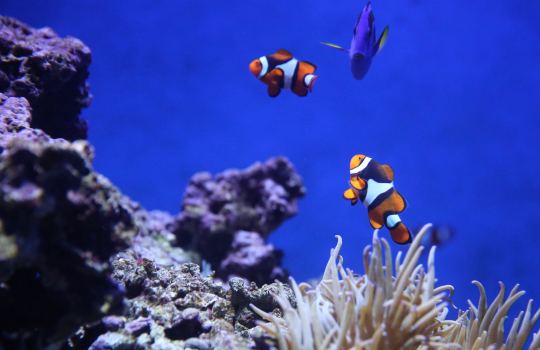
Photo by wembley on Unsplash
PraziPro is reef safe, however, it will kill tube worms/feather dusters and bristle worms or the opposite species that ar a vicinity of the Polycladida order.
PraziPro might boot cause cloudy water in some reef tanks since it contains Oxybispropanol (solubilizing agent) which can cause a microorganism imbalance.
If this is {often|this can be} often your initial time dosing PraziPro in your reef tank you will learn a lot of regarding PraziPro and why praziquantel is reef safe at intervals the subsequent article.
We’ll conjointly re-evaluate however praziquantel works, and address variety of the aspect effects PraziPro will have throughout a reef vivarium.
Is PraziPro Safe for Corals?
Is PraziPro Reef Safe? PraziPro is safe for corals, and it's usually used in most reef tanks as long as you fastidiously follow the dosing directions.
When you dose PraziPro throughout a reef tank explain to calculate the actual quantity of water in your vivarium. certify to need into consideration any live rock, sand, or something which can be displacing the water
PraziPro shouldn’t be used with sulfur or sulfite-based water conditioners. These styles of water conditioners will cause PraziPro to be less effective, which will negatively impact reef tanks' dissolved chemical element levels.
If you have a heavily furnished tank it’s conjointly associate honest plan to increase the number of aeration in your vivarium once mistreatment PraziPro to help defend your fish and corals.
Will PraziPro kill shrimp?
Is praziquantel safe for shrimp? Praziquantel is shrimp and snail safe, and it conjointly won’t kill hermit crabs or urchins. Praziquantel can solely kill worms that ar a vicinity of the Polycladida order. This cluster of animals includes flatworms, tube worms, bristle worms, and feather dusters.
In some cases, copepods may die out once a tank is treated with PraziPro. whereas the precise reason for this is {often|this can be} often unknown it'd have to be compelled to do with a reduction of the chemical element levels at intervals the water.
Copepod dies out might boot be related to the Oxybispropanol found in PraziPro which can cause microorganism blooms which can cause issues certainly crustacean species.
The best because of avoiding harming any of the invertebrates in your tank is to closely follow the dosing directions written on the PraziPro label.
Praziquantel aspect Effects
Praziquantel will cause delicate aspect effects in some fish, and it will trouble bound species that require higher dissolved chemical element levels. Fish like wrasses are particularly sensitive to praziquantel overdosing.
Mild appetency suppression is to boot a frequent praziquantel aspect result that may occur in most fish which can typically solely last for 24 to seventy-two hours.
Oxygen depletion can also cause fish to become inactive and fewer active than traditional. In some cases, corals may respond by retracting their polyps, which they could show signs of stress because of low chemical element levels.
What will the PraziPro cure?
PraziPro treats parasites like flukes, tapeworms, flatworms, and turbellarians. once PraziPro is additional to associate vivarium it's going to quickly kill external parasites in twenty-four to seventy-two hours.
Some individuals conjointly use PraziPro to treat enteric worms by soaking fish food in PraziPro, however, this is {often|this can be} often not suggested since PraziPro contains Oxybispropanol which can harm a fish’s enteric membrane.
If you'd wish to treat enteric worms it’s an associate honest plan to use a fine-grained medication like API General Cure (Buy Online) or Thomas Labs Fish Tapes (Buy Online) since they are a pure supply of praziquantel which they don’t contain any solubilizing agents.
PraziPro dose
Do associate large water amendment before dosing PraziPro and treat your water with a sulfur-free water conditioner like final ClorAm-X
Also, explain to get obviate any carbon, and stop your supermolecule skimmer and actinic ray vessel since these can render PraziPro ineffective.
Vigorously shake the bottle of PraziPro to misunderstanding the settled praziquantel. Then you will add one tablespoon of PraziPro per twenty gallons of web water that has to be treated.
How will Praziquantel Work
Praziquantel works by causation severe spasms and it will paralyze flatworms muscles. this is {often|this can be} often accomplished by inflicting a speedy metallic element flow within the worm’s cellular membrane. Changes throughout a worm’s overall structure and morphology are other ones amongst the noxious effects of praziquantel.
Once the worms die they are going to either complete breakdown and dissolve into their surroundings. they may conjointly fall off the fish, or they'll be passed out intact in their stool.
Praziquantel is relatively ineffective against juvenile flukes and worms. it's always effective against their larval stage, however, effectiveness decreases once the worms are three to four weeks recent. Then the effectiveness of praziquantel will increase slowly till it’s effective once more once the flukes or worms reach 6-7 weeks recent.
How Long will PraziPro keep at intervals the Water?
PraziPro can stay effective in water for 5 to seven days. then amount it’s suggested merely|that you just} simply do a five hundredth to seventy-fifth water amendment. If you plan to treat the tank once more you need to wait four days before re-dosing. Then when four days do a twenty-fifth to five hundredth water amendment and re-dose once more pro re nata each five to seven days.
Activated carbon can also be accustomed to take away PraziPro from the water throughout a reef tank. The carbon can with chemicals bind with the praziquantel and therefore the alternative medications at intervals the water. This technique can check that that 100% of the praziquantel is off from the tank, in contrast to water changes which might still leave some Praziquantel at intervals the water column.
0 notes
Text

When you think of animals, think of this worm, Prostheceraeus vittatus. The candy striped flatworm grows 1-3 cm long, and around half that in width. They have two tentacles at the anterior end that sometimes cause them to be mistaken for sea slugs. They are flatworms, however, and move by beating cilia to crawl along the seabed. This species is found around the coast of Europe.
photo by Bernard Picton
1 note
·
View note